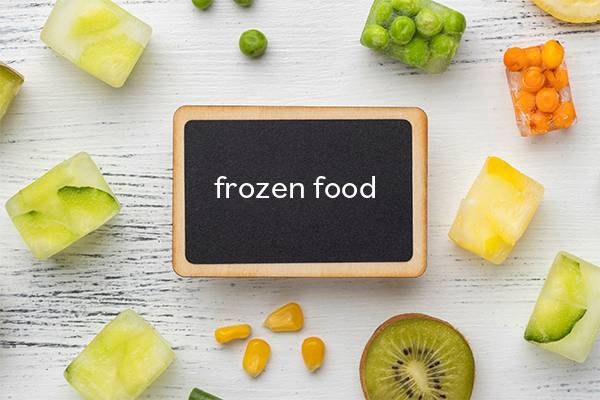
The COVID-19 pandemic has triggered an explosive growth in demand for frozen foods. According to a household survey conducted by the Ministry of Internal Affairs and Communications, the average annual expenditure on frozen foods per household in 2021 was \ 7,751. This is an increase of about 34% compared to 2019, before the pandemic began. In this survey, we have explored how frozen foods are being embraced, and by whom.
Looking at the purchase frequency of frozen foods first, we see that about 40% of respondents said they had purchased frozen foods on more than 1 day a week within the last month (Figure 1).
Next, in terms of frozen foods purchased recently, well-established items such as gyoza, noodles, and rice came top with over 30% (Figure 3). In addition to main lunch box and dinner items such as deep fried chicken and shumai, frozen vegetables also saw increased popularity.
Looking at the change in purchase frequency of each item compared to before the COVID-19 pandemic, all 23 of them showed a two-digit increase (Figure 4). This suggests that the pandemic has seen frozen foods become widely embraced. The items with particularly high increases were frozen fruits, frozen vegetables, and noodles, with about 30% of respondents saying they were now purchasing them more often. It is therefore plausible that more and more people are using frozen ingredients in their cooking.
Looking at the breakdown by gender and life stage for people who bought frozen foods as often as 2 or more days a week, as many as 20% of them were child-raising women and men (Figure 5). This suggests that frozen foods are being embraced not only by women (who are often the main cooks), but by men as well.
Looking next at the rate of purchasing multiple items by attribute, in the breakdown by gender and life stage, doing so was extremely prevalent among child-raising women, accounting for 50% (Figure 6). Factors behind this could be the heightened food consciousness and hectic lifestyle that characterize the parenting years. Also, in the breakdown by annual household income, about 40% of households earned above \ 6 million, and in terms of area resided in, Tokyo accounted for more than 40% of respondents. This reveals a need among Tokyo residents both to save time and use it effectively.
In terms of where people bought their frozen foods, small supermarkets accounted for an extremely high share of about 70%, followed by large supermarkets at about 50% (Figure 8). Besides these, drugstores accounted for about 20% and even convenience stores had a share of over 10%. This shows that more and more types of business are starting to handle frozen foods or to do so more, and people are buying them from a wider range of places.
In terms of the meals where people ate frozen foods in the last month, dinner was the most common at 50%, followed by lunch at over 40% (Figure 9). Looking at the change in frequency compared to before the COVID-19 pandemic, we found that all meals saw two-digit increases, revealing that people are using frozen foods more and more widely (Figure 10). In addition to the lifestyle changes due to the pandemic, a steady stream of new frozen food products like fruit and bread are being sold, showing that use for breakfast and snacks is expanding.
Next, looking at the reasons for purchasing frozen foods, "quicker cooking," "storability," "tastiness," and "enjoying flavors I can't make myself" came top overall (Figure 11). Being able to enjoy these various advantages is also likely to be contributing to the growing demand for frozen foods.
In addition, in the breakdown by gender and life stage, child-raising women had the highest rate of purchasing frozen foods, and their top reasons were "quicker cooking" and "convenience," followed by "enjoying flavors I can't make myself." "Tastiness" came top among single men.
In the breakdown by cooking frequency, "storability" was the main reason for purchasing them among people who cooked with them almost every day, and "convenience" was the main reason for people who did so 4 to 5 days a week.
Looking at food consciousness by attribute, among child-raising women, more people said they chose trending foods and ones with health and beauty benefits than those who said they felt cooking was a burden (Figure 12).
Next, we see that the rate of purchasing multiple frozen foods by food consciousness was higher among people whose consciousness to food matched the above three than it was among people whose attitudes did not (Figure 13). Similarly, the rate of increase in purchase frequency compared to before COVID-19 was higher among people whose consciousness to food matched the given ones (Figure 14). This reveals that being highly food-conscious like this is a factor behind why child-raising women have a high purchase frequency and rate.
Plausible reasons for the rapid growth enjoyed by frozen foods in the COVID-19 pandemic are that their storability and convenience lighten the burden of having to cook more due to eating at home more often. The market should be expected to become increasingly lively as penetration of the wide-ranging benefits of frozen foods spreads, and suppliers expand their product lineups. In addition, health consciousness, food enjoyment, the burden of cooking, and similar food consciousness that are motivating people to purchase frozen foods are likely to persist as the COVID-19 pandemic continues, so demand is likely to continue to grow.
Translating articles
- 6.9 Trillion Yen Market Created By Women― Will Afternoon Tea save the luxury hotels in the Tokyo Metropolitan Area
- The Penetration of Premium Beer, and a Polarization of the Growing Beer Market
おすすめ新着記事

成長市場を探せ キャッシュレス決済のなかでも圧倒的なボリュームを誇るクレジットカード決済は、2024年、3年連続の2桁成長で過去最高を連続更新するとともに、初の100兆円台にのせた。ネットショッピングの浸透も拡大に拍車をかけている。 キャッシュレス市場の雄、クレジットカードは3年連続過去最高更新(2025年)
キャッシュレス決済のなかでも圧倒的なボリュームを誇るクレジットカード決済は、2024年、3年連続の2桁成長で過去最高を連続更新するとともに、初の100兆円台にのせた。ネットショッピングの浸透も拡大に拍車をかけている。

消費者調査データ トップは「ドライゼロ」、2位を争う「オールフリー」「のんある気分」
アップトレンドが続くノンアルコール飲料。調査結果は「アサヒ ドライゼロ」が首位を獲得、上位にはビールテイストが目立つなかで、「のんある気分」が健闘している。再購入意向では10位内にワインテイストやカクテルテイストの商品も食い込み、ジャンルとしての広がりを感じさせる。

消費者調査データ RTD(2025年3月版) 「氷結」、「ほろよい」の競り合い続く アサヒの新顔は高いリピート意向
調査で結果は「氷結」が半歩抜け出し、それを「ほろよい」が追う形となった。上位にはロングセラーが目立つが、再購入意向では「アサヒ GINON」が3位に食い込んだ。大ヒットしたレモンサワーに加え、お茶やウメなどのフレーバーの台頭、ベース酒の多様化など新たな競争が生まれている。









![戦略家のための知的羅針盤[エム・ネクスト]product by 松田 久一](/img/mnext-sub-title.png)



